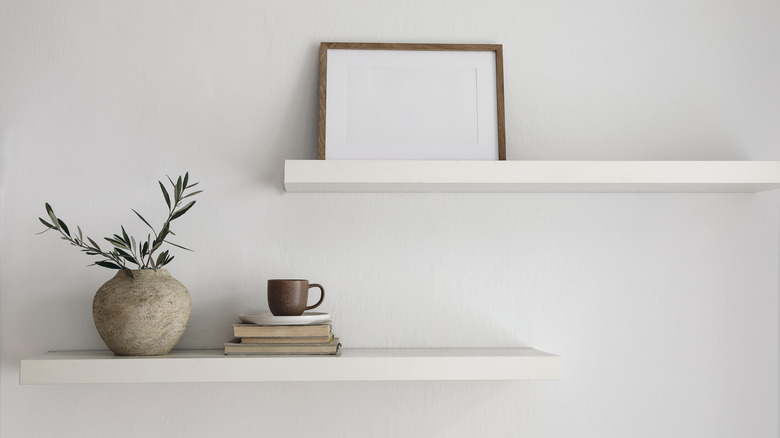Are Floating Shelves Becoming Outdated?
Maybe you're settling into a new home or finally redoing that kitchen you have been meaning to update since 2013. You enter that space, and there is a blank wall staring at you, and your mind goes to floating shelves. But hold on, aren't those kind of, well, overdone? If you have been scrolling for styles on Instagram or watching your favorite home renovation shows lately, you might feel like floating shelves have reached their saturation point. So let's settle it — are floating shelves outdated?
The fact is, floating shelves aren't going anywhere. But the conversation around them is shifting for sure. Designer Ami McKay said in an interview with Livingetc, "I do think floating shelves have been overdone." However, she added, "Unless they are done spectacularly ... An extra-long floating shelf is dramatic and that can look good." They also work best when tied to purpose. For example, floating shelves in a laundry room for easy access to supplies, not just as a visual afterthought.
Richer, more personal ledge options like walnut, white oak, and sapele mahogany can also break up sterile designs and bring a depth that other materials just can't match. The right shelf, styled smartly and built with quality, won't just stay in style, it'll outlast the trend altogether. So if you're wondering how to choose the best style of floating shelf for your space, start by asking what that space needs. It could be a visual break, extra storage, or just a design focal point.
Best floating shelf designs
So let's say you're ready to try (or keep) floating shelves in your home, but now the question is: what style actually works? It's one thing to like the look, but it's another to make sure the shelf actually fits your lifestyle and room. Choose shelves that are functional, durable, and make a lasting impression. And yes, if one's already tilting on your wall, don't panic. Quickly fix your tilted floating shelf with simple tricks like repositioning anchors into wall studs or tightening up sagging brackets. Now, it is time to make sure it actually works in your space.
In kitchens, floating shelves open up the room and show off your most-used items. Walnut and white oak provide strength and style, while live-edge finishes or darker stains add personality. Just be sure to anchor them well, and consider spacing. But how to determine the perfect height for your floating shelves? Above counters, aim for 18 to 24 inches of clearance; in living areas, shelves around 4 to 5 feet from the floor hit a comfortable visual mark.
Bathrooms are all about maximizing utility in tight quarters, and moisture-resistant options like teak or sealed oak perform best. Mount a couple above the toilet or near the vanity to stash essentials while keeping things clean and airy. And when it comes to living rooms, this is where your creativity can shine. Floating shelves become mini galleries that hold art, candles, ceramics, and even tech. When chosen with care and installed with intent, floating shelves can still turn heads.

